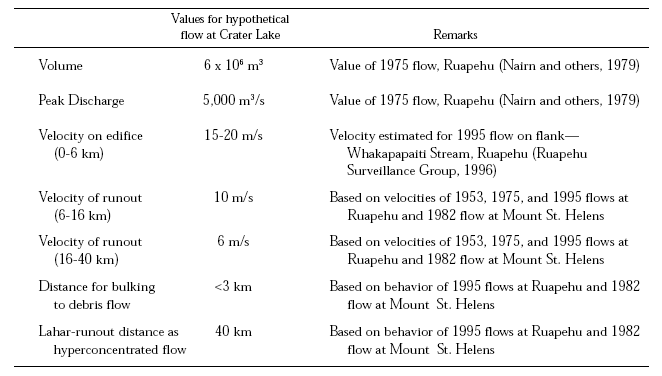Volcano and Earthquake Hazards in the Crater Lake Region, Oregon
Regional Volcanism
The Cascade Range is known for large volcanoes that have been active for periods of tens to hundreds of thousands of years, among them Mount Mazama, the volcano in which Crater Lake caldera formed. Far more numerous in northern California, Oregon, and southern Washington, however, are smaller shield volcanoes, cinder cones, fissure vents, and lava domes that are manifestations of regional volcanism. Each of these erupted for brief periods in geologic terms, generally in a single episode. Compositions include the entire range from basalt to andesite, with a corresponding variety of eruptive styles and products; the most common lava type is basalt. Hazards arise mainly from tephra falls and lava flows. Lava flows may travel tens of kilometers downslope but travel sufficiently slowly that they pose a threat only to structures and property. Life-threatening pyroclastic eruptions are possible when magma interacts with shallow ground water in wet areas, producing surges or pyroclastic flows. Areas affected by such pyroclastic activity tend to be limited to a few square kilometers. In addition, the region downwind may experience tephra fall.
Crater Lake lies in a part of the Cascades where the belt of Quaternary volcanoes is comparatively narrow, about 30 km from west to east (fig. 1, plate 1; Guffanti and Weaver, 1988). For purposes of hazard assessment for the immediate Crater Lake area, consider the region between approximately latitudes 42° 48′ and 43° 05′, that is, ~11 km north and south of the caldera rim (~1,100 km2; ~1,040 km2 excluding the caldera). It is important to appreciate that Mount Mazama itself, dacite and rhyodacite vents related to Mazama, and vents within the caldera are excluded from table 2. Some eruptive episodes are represented by several approximately coeval, nearby vents. For example, the three postglacial vents at Castle Point lie in close proximity to one another. They produced related basaltic lava and were active during a single period of at most a few years (age bracketed between 8 and 13 ka; considered to be <10 ka in table 2). The three vents thus represent a single eruptive episode. In addition, paleomagnetic studies and K–Ar dating have established that eruptive episodes have not been uniformly spaced in time. We have given estimates of the average number of episodes per 1,000 years in table 2. The episodes varied widely in volume of products and number of vents. Because younger lava flows tend to obscure older ones, the record is much less complete for vents and episodes 100-1,000 ka in age. The average number of known episodes per 1,000 years is much smaller for this age range than for the <10 ka and 10-100 ka intervals.
Table 1.—Volume and flow properties of a hypothetical lahar at Crater Lake based on events at Mount St. Helens, Washington, and Ruapehu Volcano, New Zealand
[m3, cubic meters; m3/s, cubic meters per second; km, kilometers; -do-, ditto]


